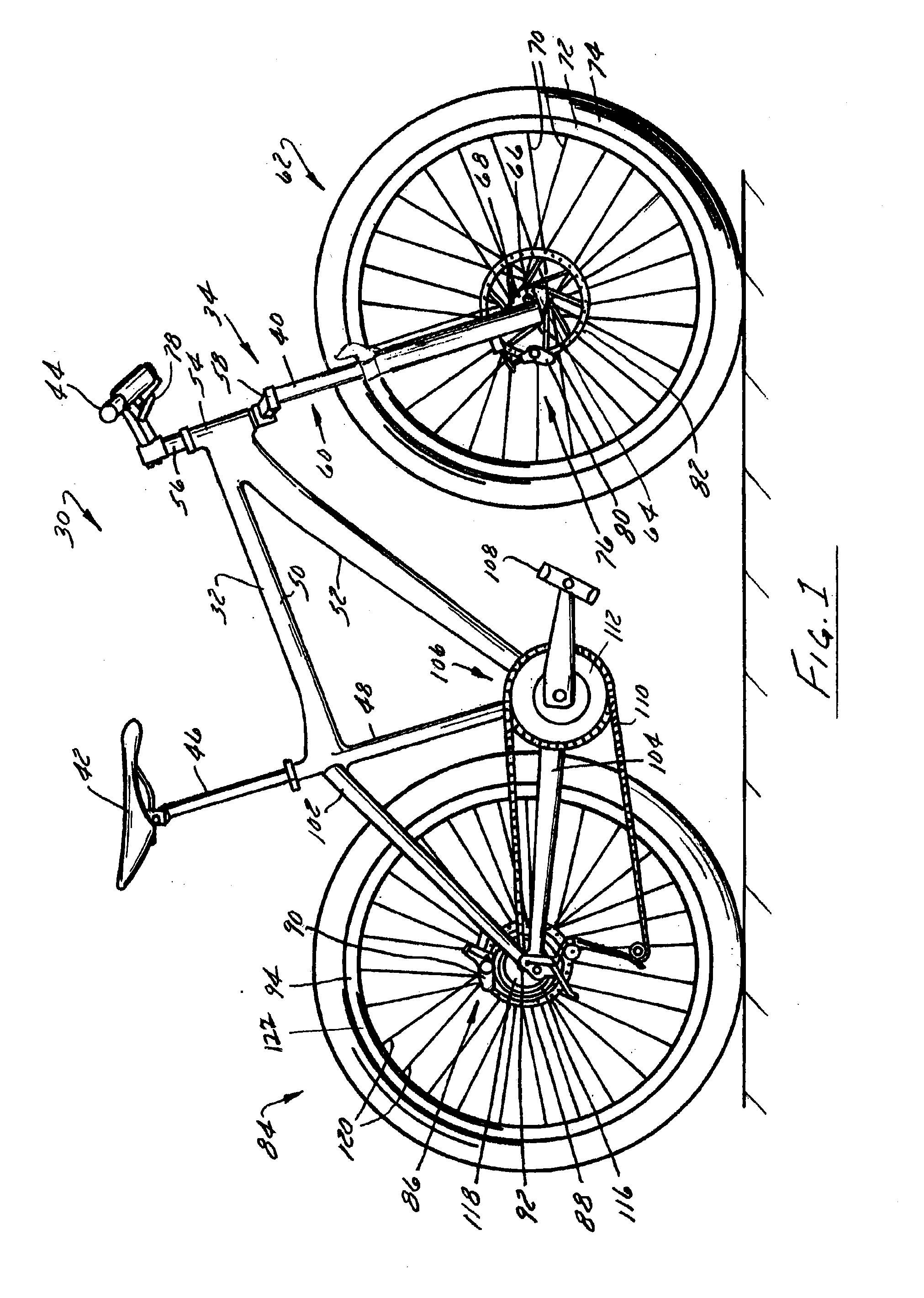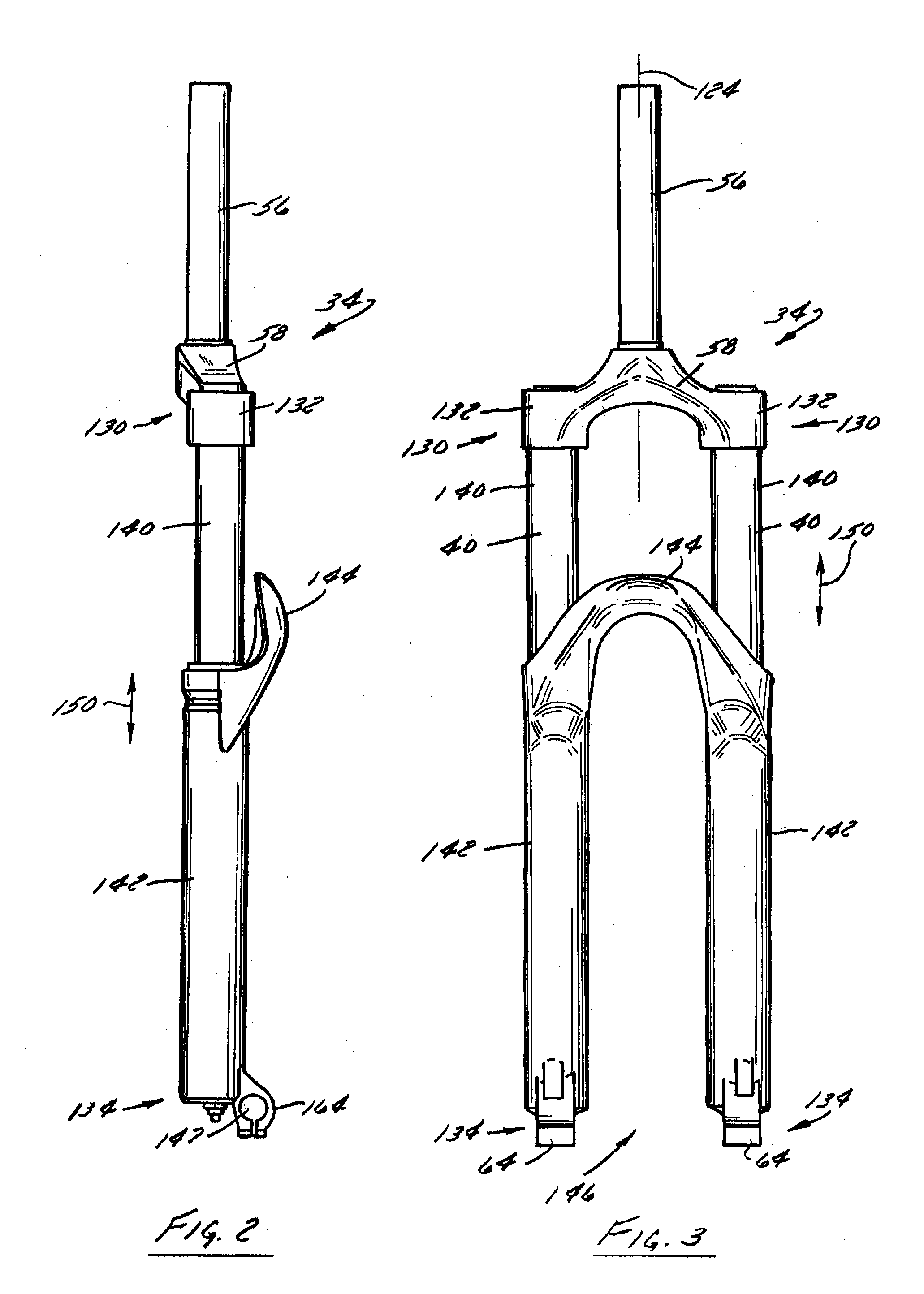Bicycle Air Shock Assemblies With Tunable Suspension Performance
a technology of air shock and bicycle, which is applied in the field of bicycles, can solve the problems of complicated shock assembly construction, limited suspension performance as well as the structure of the bicycle, and limited adjustment of such systems
- Summary
- Abstract
- Description
- Claims
- Application Information
AI Technical Summary
Benefits of technology
Problems solved by technology
Method used
Image
Examples
Embodiment Construction
[0039]FIG. 1 shows a bicycle 30 having a frame assembly 32 equipped with a front wheel suspension system 34 that includes a pair of shocks, shock absorbers, or shock assemblies 40 according to one embodiment of the present invention. As explained further below, it is envisioned that bicycle 30 be equipped with one or shock assemblies according to the present invention and that the shock assemblies dampen movement between one or more of the front and rear wheel assemblies and the seat and / or handlebars of the underlying bicycle. Bicycle 30 is merely exemplary of one style of bicycle envisioned to benefit from shock assemblies like those disclosed herein.
[0040]Bicycle 30 includes a seat 42 and handlebars 44 that are attached to frame assembly 32. A seat post 46 is connected to seat 42 and slidably engages a seat tube 48 of frame assembly 32. A top tube 50 and a down tube 52 extend forwardly from seat tube 48 to a head tube 54 of frame assembly 32. Handlebars 44 are connected to a stee...
PUM
 Login to View More
Login to View More Abstract
Description
Claims
Application Information
 Login to View More
Login to View More - R&D
- Intellectual Property
- Life Sciences
- Materials
- Tech Scout
- Unparalleled Data Quality
- Higher Quality Content
- 60% Fewer Hallucinations
Browse by: Latest US Patents, China's latest patents, Technical Efficacy Thesaurus, Application Domain, Technology Topic, Popular Technical Reports.
© 2025 PatSnap. All rights reserved.Legal|Privacy policy|Modern Slavery Act Transparency Statement|Sitemap|About US| Contact US: help@patsnap.com



